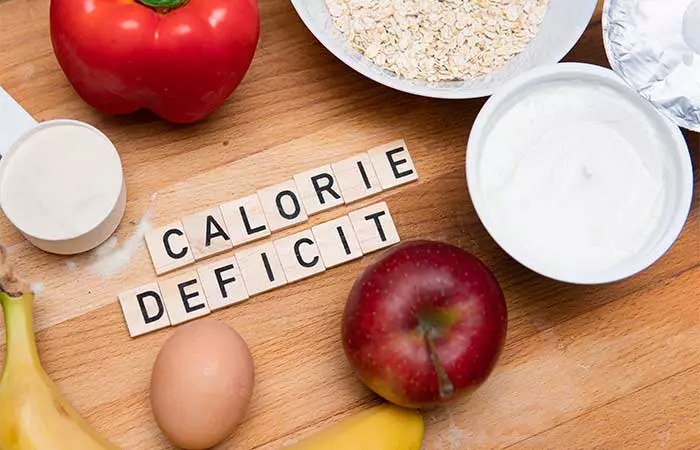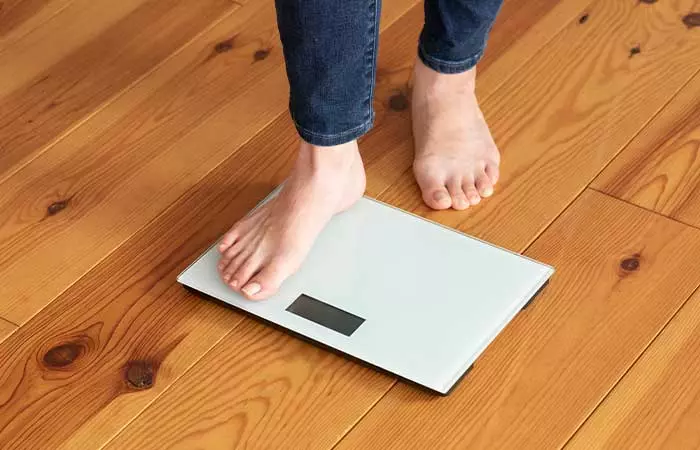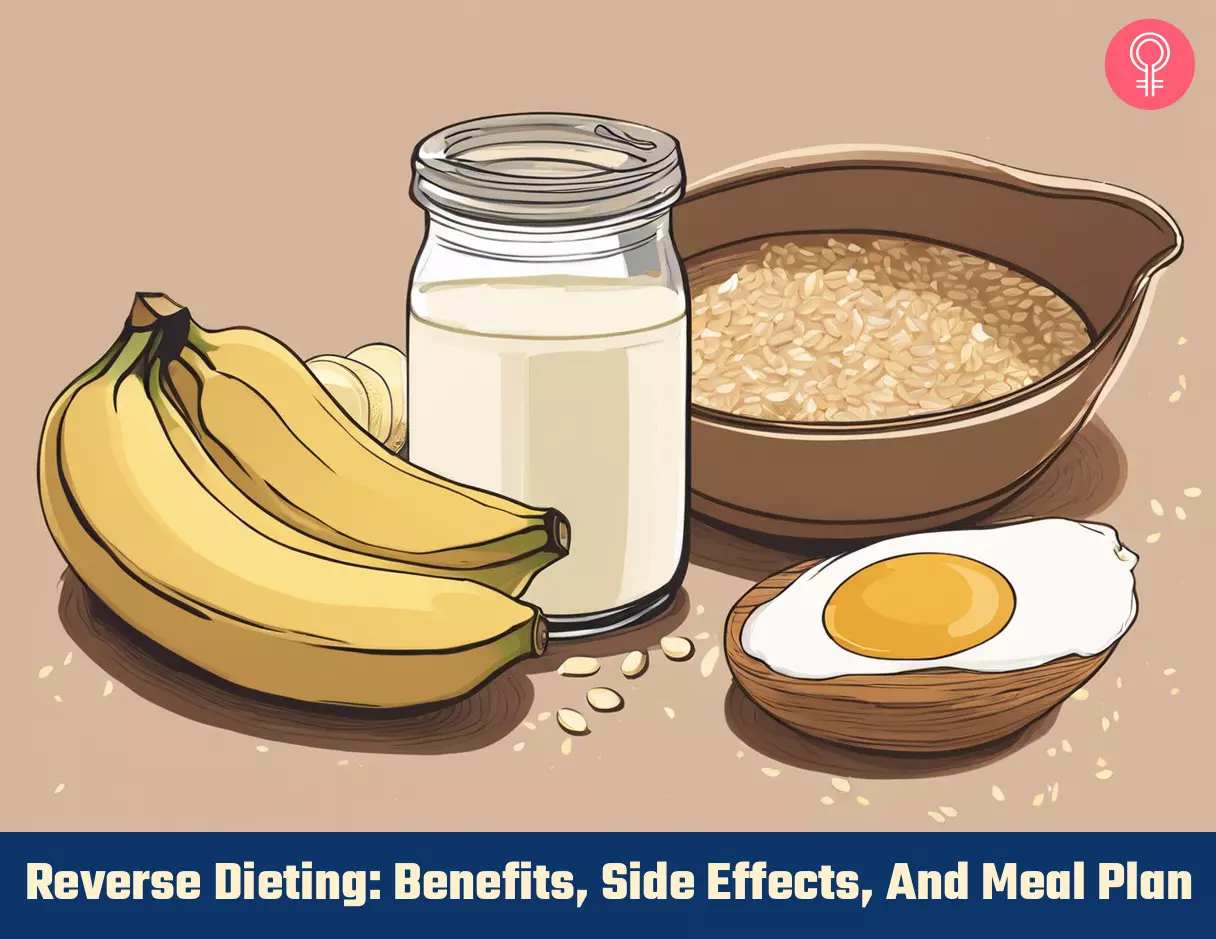This diet is popular among fitness enthusiasts and professionals alike, who claim it to be the best diet to facilitate your weight goals between changing diet patterns. In this article, we dive into the fundamentals of this diet, explore meal plans, and uncover potential consequences. Keep reading to learn more about reverse dieting.
What Is Reverse Dieting?
Reverse dieting proposes gradually increasing your calorie intake to boost energy levels while preventing weight regain and smoothing the transition back to a normal diet. It is commonly popular among competitive athletes and fitness professionals. This diet strategy often follows a strict low-calorie weight loss diet and spans several weeks or months where caloric intake is increased incrementally. In theory, this stepwise increase in caloric intake gradually restores hormonal balance and boosts metabolism while avoiding rapid weight gain after a period of caloric restriction (1). Several anecdotal reports claim that reverse dieting boosts energy levels and curbs appetite while maintaining the weight loss achieved in the previous diet. However, these claims require more concrete research-based evidence. Hence, presently, the efficacy of this diet is not scientifically approved.
How Does Reverse Dieting Work?
During a low-calorie weight loss diet, the metabolic rate of the human body slows down (2). Many competitive athletes who need to maintain a weight class often go on such diets while competing in tournaments. After the competitions, they need to regain their metabolic capacity to continue training. However, immediately going back to consuming pre-diet levels of calories may lead to rapid weight gain. This is where reverse dieting comes into play, allowing these fitness professionals to ease back into their normal eating habits. The caloric intake observed during the preceding low-calorie diet serves as the baseline of the reverse diet plan. Proponents of the diet typically recommend increasing the calories to 2-3% above the baseline, every week (3). This phased increase in calories may continue for 4-10 weeks or beyond until the target, pre-diet caloric intake during normal diet is reached. As athletes and bodybuilders would go on a calorie-deficit diet based on their body type and weight class, the duration of the diet and the number of calories added weekly will vary from person to person. The protein intake during this diet may be kept constant as adequate levels of protein intake are measured based on body weight and not calorie intake (4). With the sustained popularity of reverse dieting as a weight-loss maintenance strategy among the fitness community, this diet strategy seems to live up to its claims. Continue to the next section to learn the potential benefits of the diet and if it is suitable for you.
Benefits Of Reverse Dieting
The reported beneficial effects of the reverse diet are largely anecdotal and require further research to prove their credibility. However, it is popular among fitness enthusiasts and a majority of athletes swear by its efficacy. Let us take a look at a few features of reverse dieting and the impact it may have on the human body –
- May Help Mitigate Metabolic Adaptation Metabolic adaptation is the body’s survival response where the metabolism (energy expense) adjusts to calorie intake to prevent further weight loss. Abruptly increasing caloric intake to pre-diet levels can lead to rapid accumulation of fat mass, leading to weight gain, as the metabolism does not get time to adjust and is still slow (1), (5).
- May Aid Weight Maintenance The metabolism gets to adjust slowly to the dietary change and can take on a minimal increase in caloric intake. This may help the body transition from extreme weight loss to a weight maintenance stage without reversing the results from the low-calorie diet.
- May Help Improve Energy Levels Calorie-restricted diets may reduce your energy levels, leading to symptoms like increased fatigue, irritation, and decreased concentration levels. When you slowly increase your calorie intake, the body has to work with small amounts of increased calories at a time, making it easier to regulate the energy expended. This may help boost your energy levels and reduce fatigue and other symptoms (6).
- May Improve Athletic Performance The stable and slowly increasing energy levels may enhance the body’s capacity to physically push itself and recover faster from exhaustion, allowing professional athletes to train better and improve their form and performance.
- May Aid In Muscle Maintenance The added calories can come from proteins, in which case, as the protein intake levels are stabilized, they may help preserve the lean muscle mass gained during the diet (7).
- May Restore Hormonal Balance A long low-calorie diet may disrupt the balance of hormones like ghrelini Also called the “hunger hormone”, this hormone is produced and secreted by the stomach, increasing the drive to eat. and leptini A hormone released by the adipose tissues (body fats) that regulates your appetite and fat storage, aiding in weight maintenance. , which help regulate metabolism, hunger, and satiety (8). Anecdotal reports claim reverse dieting may help bring their levels back to normal.
- May Prevent Binge Eating Unhealthy eating practices and binge eating are common among athletes, especially competitive bodybuilders (9). Moreover, a sudden return to normal caloric intake after a low-calorie diet may lead to binge eating and other eating disorders. A transitional diet may help maintain the habit of tracking caloric intake, thus preventing overeating. Although these benefits might not be science-backed, they seemingly work for many people. However, for any diet to work well, it has to be approached with a systematic plan. The same is applied to the reverse diet. The following sections provide further insight into the fundamentals of this diet and how to set up a diet plan that works for you.
Reverse Dieting Meal Plan
The reverse dieting plan builds on a caloric intake baseline which may differ from individual to individual. To understand a sample reverse diet meal plan, let us assume you were on a 1000-calorie diet previously, irrespective of your fitness levels. From this baseline, you decide to increase your caloric intake by a maximum of 100 calories per day. So, now you can eat under 1100 calories per day for a week. Carbs and fats are the usual food groups added for the extra calories; however, there is no defined set of rules about what you can or cannot eat unless you have food sensitivities. Here is how your 1100-calorie-a-day weekly diet plan may look: Reverse dieting is recommended as a follow-up after a low-calorie diet. Therefore, you must be aware that 100 calories is not a lot. Half a bagel alone can amount to approximately 130-150 calories (10). This is how minute the change in daily caloric intake must be, gradually increasing every week. ½ cup of green smoothie (200 cal) 1 tablespoon of honey (70 cal) 1 tablespoon of peanut butter (100 cal) 4-5 rice crackers (100 cal) ½ cup of pinto beans (90 cal) 225 fluid grams of vegetable juice (50 cal) (65 cal) ½ cup of canned black beans (80 cal), 1 tablespoon of lime vinaigrette (30 cal) (70 cal) The average daily required caloric intake on a normal diet is 2,000 calories per day for women and 2,500 calories per day for men (11). Therefore, an individual transitioning from a 1000-calorie diet will need at least 10 weeks to reach their pre-diet caloric intake goals. This diet is not science-backed because the way caloric intake may impact the body may vary per individual. Moreover, it’s tough to maintain a reduced weight without a basic understanding of the body and diet and nutrition concepts. Therefore, always consult a registered dietitian or a nutritionist before starting a reverse diet. That said, let us explore the scope of this diet in weight loss.
Reverse Dieting For Weight Loss: Does It Work?
A reverse diet is not considered a standalone diet for weight loss. There is limited research to support this diet’s effectiveness in weight loss although followers of the diet claimed to have observed related changes in their body. Let us reconsider the following factors to understand why some people may experience weight loss while on the reverse diet:
1. May Addresses The Imbalance Between Digestive Hormones
Anecdotal claims suggest that slowly increasing caloric intake may restore the balance between hunger and satiety hormones, thus helping you regulate your eating patterns.
2. May Allow Your Metabolism To Catch Up With Dietary Changes
During the low-calorie diet, your body acquires a state (metabolic adaptation) where it is used to burning only a small amount of calories and cannot burn any excess overnight. In theory, an incremental increase of small amounts of calories might be less challenging for the body to burn, helping it slowly increase its metabolic rate.
3. May Keep Eating Behaviors In Check
As the reverse diet still requires constant monitoring of calorie counts for each meal, the prospect of binge eating is low. These factors are based on ideal hypothetical concepts and have not been scientifically proven. Therefore, a reverse diet is not recommended for individuals looking for healthy weight loss diets. Additionally, adhering to the reverse diet plan, which has a limited foundation in science and medicine, may have more of a negative than a positive impact on your body. The following section discusses how this diet can go wrong.
Side Effects Of Reverse Dieting
The low-calorie diets preceding reverse dieting are themselves considered unhealthy. Many nutritionists argue that there is no need for another diet following that. Theoretically, this diet may help people return to their normal caloric intake, but not everybody’s body is the same. While some people might enjoy the benefits it claims, others may continue to experience nutrient deficiencies, weakened bone health and immunity, and more, from the low-calorie diet. The reverse diet is a slow process and delays the recovery in such cases. Here are some more ways in which this diet can have adverse effects on the body:
1. May Lead To Weight Fluctuations
Constantly changing diet patterns may confuse the body’s understanding of food supply. As the body feels that food intake is unreliable, it may start storing fat and interfere with weight management (12).
2. May Cause Digestive Discomfort
The diet emphasizes caloric but not nutrient intake. Increasing the intake of certain nutrients, such as fibers, may disrupt the gut microbiota and result in inflammatory conditions (13).
3. May Have A Negative Psychological Impact
For those who move to a reverse diet after a very low-calorie dieti A restricted calorie diet that proposes the consumption of 800-1200 calories per day to facilitate rapid weight loss. (VLCD), it will still be considered a VLCD, which may lead to symptoms of depression, anxiety, or other behavioral issues (14). Besides these side effects, there are other drawbacks of reverse dieting, such as:
It is not a science-backed diet, with its reasonings rooted in theoretical presumptions. It lacks a basic diet structure, which makes it infeasible for everyone. It does not suit dynamic weight management goals. It is not a sustainable diet for those with an active social life.
Weighing the negatives against the positives, it is safe to say that this diet is not for everyone, especially beginners. If you need to lose a lot of weight and maintain it for some purpose, it is better to consult registered dietitians and nutritionists before getting on the reverse diet. Reverse dieting is a weight-loss maintenance strategy that proposes a phased increase in daily caloric intake, promising higher food consumption with little to no weight gain. It is recommended to people who have been on a low-calorie diet for weight loss and wish to return to their normal diet without losing their progress. Proponents of the diet, which is apparently a large chunk of the fitness community, claim the diet has multiple benefits for serious fitness enthusiasts. However, scientific research to prove its efficacy is limited. Since the diet works with small amounts of caloric intake way below the average daily requirement, it is recommended to consult diet and nutrition experts to understand its functions and if is the right fit for you. What to do after a reverse diet? Fitness instructors typically recommend going on a maintenance phase after achieving normal calorie intake and weight goals through reverse dieting. This phase involves continuing to maintain an active lifestyle and monitoring your weight, energy levels, and overall well-being, while you start easing your calorie restrictions. You may also set new fitness goals like improving your strength, agility, or specific athletic performances. How do I know if reverse dieting is right for me? If you wish to transition from a prolonged low-calorie diet, reverse dieting may be good for you. Do consult a registered diet or nutrition expert to assess your current body conditions and needs and discuss other possible solutions too. How long should I be in the maintenance phase after the reverse diet? The maintenance phase duration varies according to individual needs and goals. While some continue on it indefinitely for a balanced lifestyle, others may look forward to new health and fitness goals. Talking to your instructor may help you plan your maintenance phase. Can I exercise while reverse dieting? Yes. Regular exercising is recommended during reverse dieting to help your body build the capacity to burn increased caloric intake and maintain its composition. As your calorie intake increases, your exercise routines may require adjustments. Get regular consultations from fitness and nutrition experts to work around it.
Illustration: Reverse Dieting: Benefits Side Effects And Meal Plan
Although the benefits of reverse dieting are not proven, many people claim to have experienced transformational results. Check out the video below to understand if this diet is right for you.












